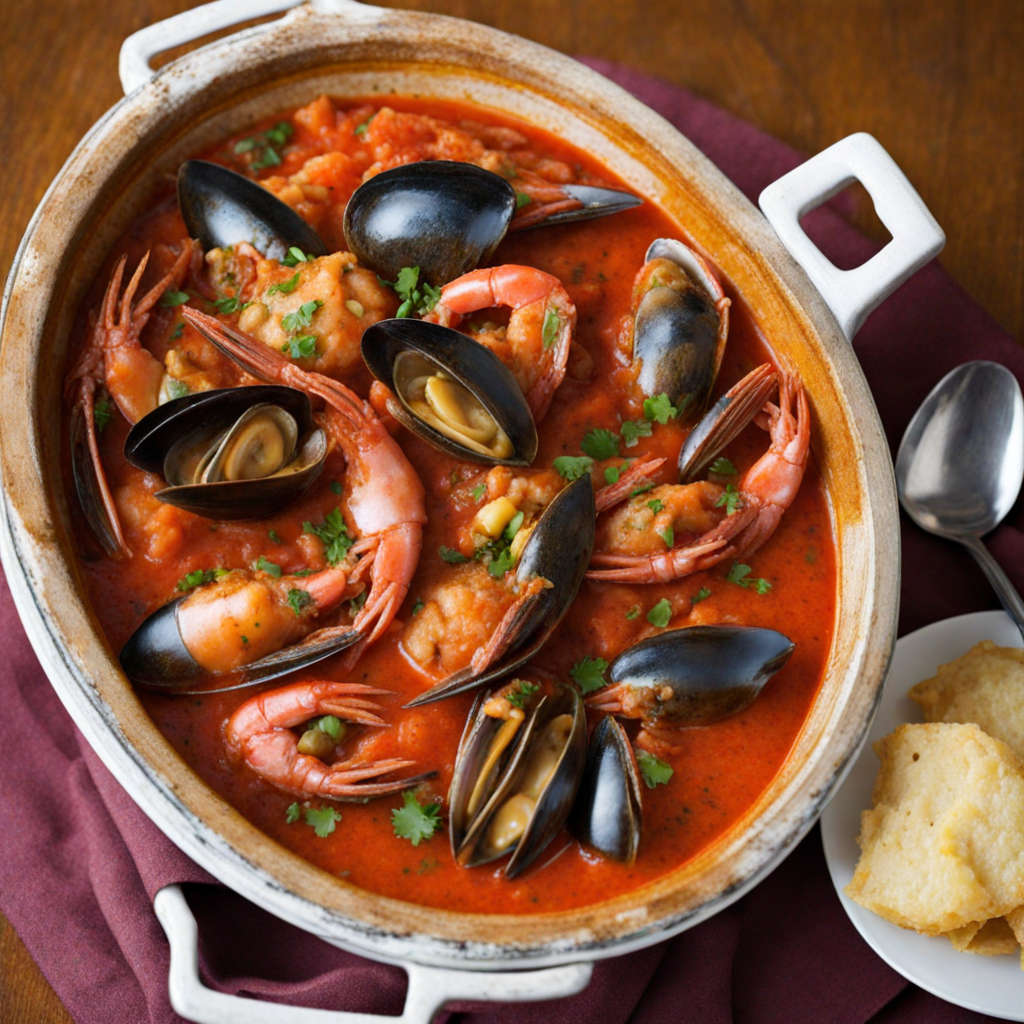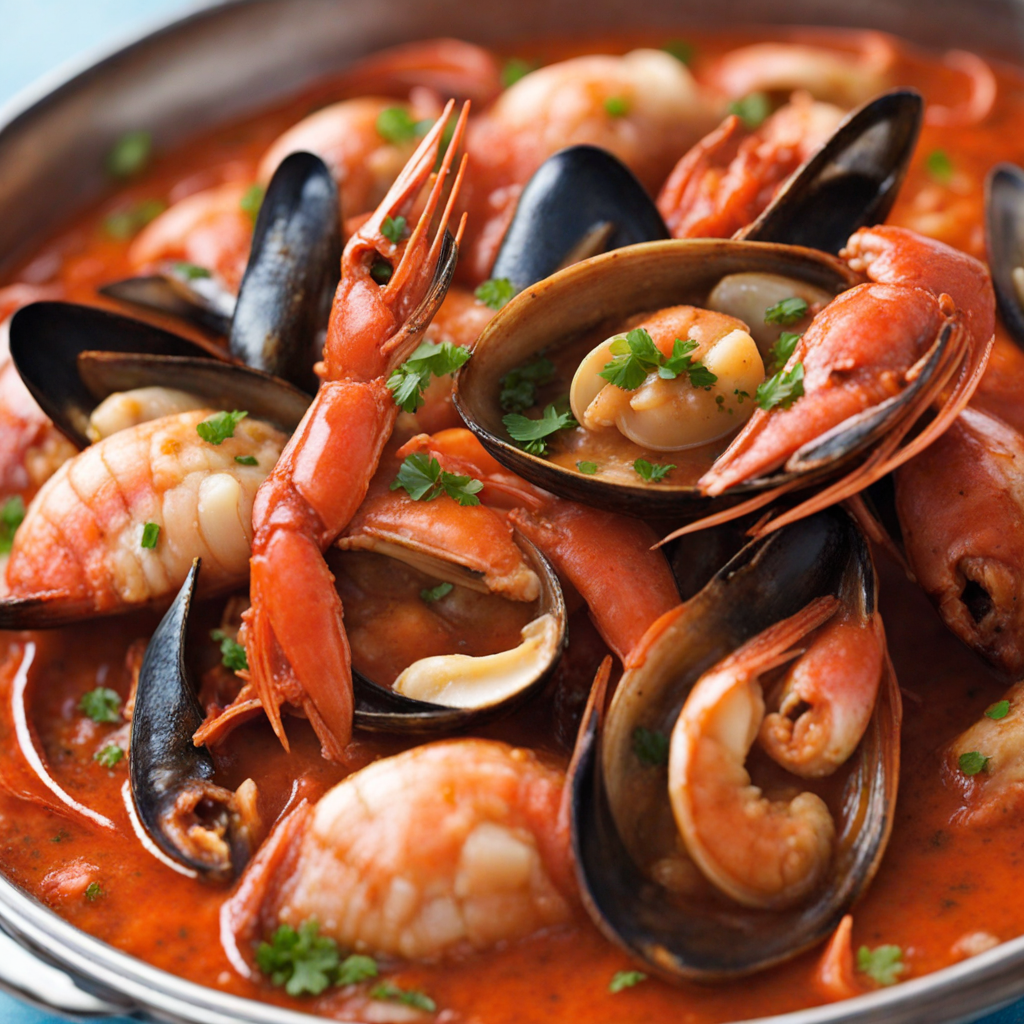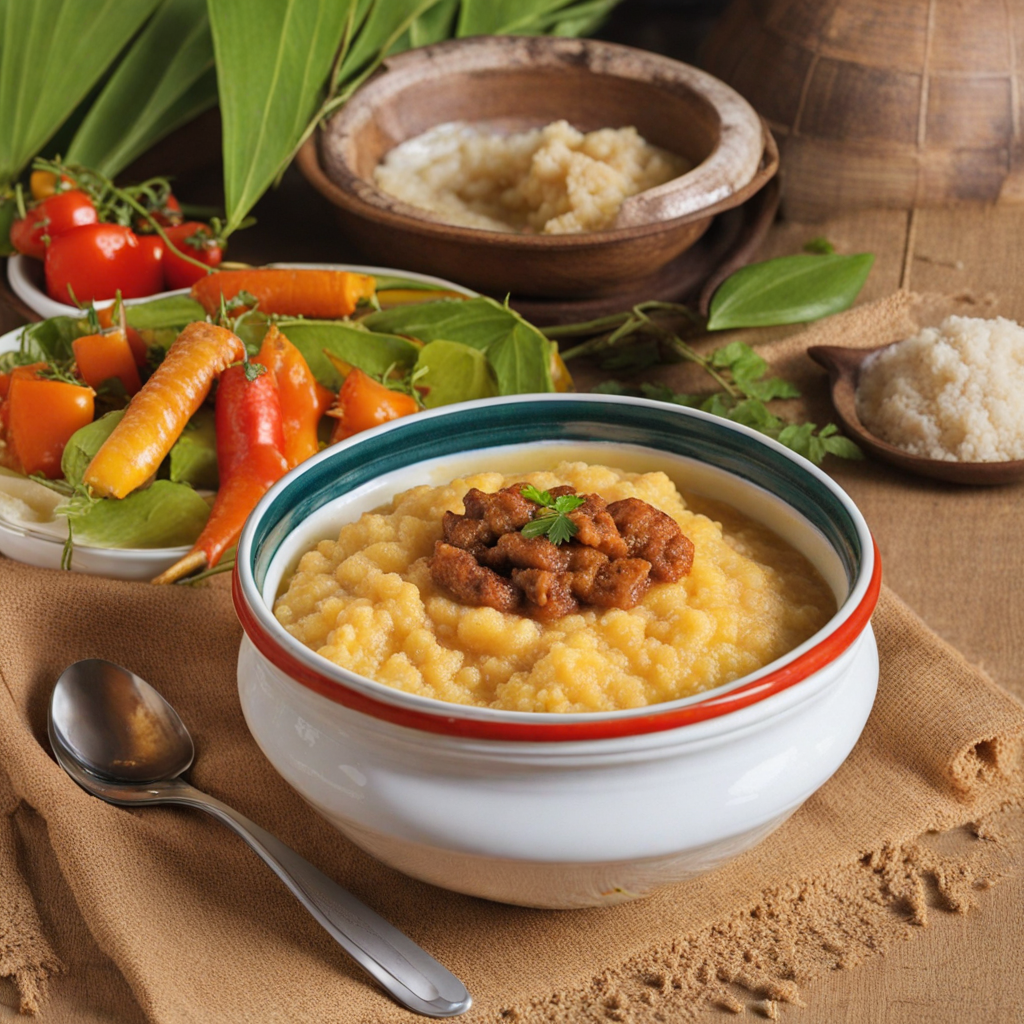Mariscada
Mariscada is a vibrant seafood stew that embodies the rich culinary heritage of Angola. This dish is a celebration of the ocean's bounty, featuring a variety of fresh seafood such as shrimp, crab, and fish, all simmered to perfection in a fragrant broth. The key ingredients are often complemented by a medley of vegetables, including onions, tomatoes, and bell peppers, which add depth and flavor to the dish. The use of spices like garlic, paprika, and a hint of chili creates a harmonious balance, making each bite a delightful explosion of taste. The preparation of Mariscada is as much an art as it is a science. The seafood is typically marinated in a blend of spices before being cooked slowly, allowing the flavors to meld together beautifully. This slow-cooking process ensures that the seafood remains tender and succulent, absorbing the aromatic essence of the broth. As the stew simmers, the kitchen fills with an irresistible aroma that beckons everyone to the table, preparing them for a hearty and satisfying meal. Served piping hot, Mariscada is often accompanied by a side of rice or crusty bread, perfect for soaking up the rich, flavorful sauce. It is a dish that encourages sharing and togetherness, making it a popular choice for gatherings and celebrations. Each bowl of Mariscada tells a story of Angolan culture, showcasing the importance of fresh ingredients and communal dining, inviting anyone who tries it to experience a taste of the warm and vibrant Angolan spirit.
How It Became This Dish
The Rich History of Mariscada: A Culinary Gem from Angola Origins of Mariscada Mariscada, a traditional Angolan seafood dish, embodies the rich cultural tapestry of Angola’s coastal regions. Angolan cuisine, much like its people, is a blend of indigenous, African, Portuguese, and even Brazilian influences, resulting from centuries of trade, colonization, and migration. The name "mariscada" itself comes from the Spanish word "marisco," which means shellfish, but in the Angolan context, it refers to a medley of seafood, primarily highlighting the bounty of the Atlantic Ocean. The dish likely has its roots in the fishing communities along Angola's 1,650 km coastline, where fresh seafood is abundant. The coastal towns of Luanda, Lobito, and Namibe have historically relied on the ocean for sustenance, and as such, seafood has become a cornerstone of their culinary practices. The preparation of mariscada reflects the Angolan people's deep connection to the sea, as well as their resourcefulness in creating hearty, flavorful meals from local ingredients. Cultural Significance Mariscada holds a special place in Angolan culture, often associated with family gatherings, celebrations, and communal feasts. The dish is a symbol of togetherness, often served in large portions that encourage sharing. This communal aspect of dining is rooted in the traditional Angolan way of life, where meals often bring families and friends together, fostering relationships and strengthening community bonds. Seafood has also been a significant part of the Angolan economy, providing livelihoods for many fishermen and contributing to local markets. The fishing industry is not only a source of food but also a vital component of Angola’s cultural identity. Mariscada, therefore, serves as both a delicious meal and a reminder of the importance of the sea to Angolan life and culture. Ingredients and Preparation While variations of mariscada exist, the dish typically features a combination of fresh seafood, including shrimp, crab, fish, and sometimes shellfish, cooked in a rich, flavorful sauce. The ingredients often reflect what is available in local markets, making each preparation unique to the region and season. The preparation of mariscada usually involves marinating the seafood in a mixture of spices, garlic, and sometimes citrus, which helps to enhance the natural flavors. The saucepan is then filled with onions, tomatoes, and peppers, commonly used in Angolan cooking, creating a vibrant and aromatic base. The seafood is added to the pot, simmering until cooked through, with the flavors melding together to create a delectable sauce that is often served alongside rice or funge (a type of cassava porridge). Development Over Time The evolution of mariscada mirrors the broader changes in Angolan society and cuisine over the years. During the colonial period, Portuguese culinary practices began to permeate Angolan cooking, introducing new ingredients and techniques. Spices such as piri-piri and olive oil became staples, and the influence of Portuguese seafood dishes contributed to the development of mariscada as we know it today. Following Angola's independence in 1975 after a long and brutal civil war, the country experienced significant social and economic changes. With the end of the conflict came a resurgence of interest in traditional Angolan cuisine, including mariscada. As communities rebuilt, there was a renewed focus on local ingredients and culinary heritage, leading to a revival of traditional dishes. In recent years, mariscada has gained recognition beyond Angola’s borders, becoming a symbol of the country’s rich culinary heritage. As globalization has increased, Angolan cuisine, including mariscada, has begun to find its way into international food scenes, showcasing the unique flavors and traditions of this African nation. Modern Interpretations In contemporary Angola, mariscada can be found in various settings, from street food stalls to high-end restaurants. Chefs are experimenting with the traditional recipe, infusing it with modern culinary techniques and global flavors while still honoring its roots. Some variations might incorporate local ingredients such as peri-peri sauce or tropical fruits, adding a new twist to this classic dish while keeping the essence of mariscada intact. Additionally, the rise of food tourism in Angola has spotlighted mariscada as a must-try dish for visitors. Food tours often highlight the importance of seafood in Angolan culture, and mariscada serves as a focal point for tourists seeking an authentic culinary experience. This exposure has not only helped to preserve traditional recipes but has also fostered a greater appreciation for Angola’s culinary diversity on a global scale. Conclusion Mariscada is more than just a meal; it is a cultural artifact that tells the story of Angola’s coastal communities, their connection to the sea, and their culinary evolution over time. As it continues to adapt and thrive in contemporary settings, mariscada remains a testament to the resilience and creativity of the Angolan people. Each plate served is a celebration of history, culture, and the rich flavors of a nation that has much to offer to the world. By savoring mariscada, one not only enjoys a delightful dish but also partakes in the vibrant heritage of Angola, making each bite a journey through time and tradition.
You may like
Discover local flavors from Angola







